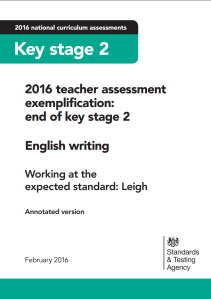
I haven’t got room for all the caveats that this needs, so let me cover it all by saying that this could all be nonsense. However, since when did ‘being nonsense’ ever stop something happening in education?
A couple of weeks ago I put out a request for people to share their test data. Today, I have the raw scores of around 7000 Year 6 pupils on the sample tests, and can begin to draw some very very dubious conclusions. (See below if you want to add to the pupils!)
So, what can we see so far?
Updated 26th March 2016
Reading
Looking at the data from tests taken this term alone (as earlier tests are obviously likely to show lower attainment), the following can be said of a sample of 6426 pupils’ test scores:
- The mean average score in the sample was 29 marks
- The median score in the sample was 29 marks
- The middle 50% of students scored between 23 and 36 marks
- If the passmark were set at the 50% mark (i.e. 25/50), then 70% of pupils would have reached the expected standard
Obviously there is still some time until test week, and so children’s scores will unquestionably improve.
The graph shows the spread of results in the sample:

Grammar, Punctuation & Spelling
Looking at the data from tests taken this term alone, the following can be said of a sample of 5489 test scores:
- The mean average score in the sample was 35 marks
- The median score in the sample was 35 marks
- The middle 50% of students scored between 26 and 44 marks
- If the passmark were set at the 50% mark (i.e. 35/70), then 53% of pupils would have reached the expected standard
Obviously there is still some time until test week, and so children’s scores will unquestionably improve.
The graph shows the spread of results in the sample:
Mathematics
Looking at the data from tests taken this term alone, the following can be said of a sample of 6926 test scores:
- The mean average score in the sample was 59 marks
- The median score in the sample was 59 marks
- The middle 50% of students scored between 39 and 79 marks
- If the passmark were set at the 50% mark (i.e. 55/110), then 55% of pupils would have reached the expected standard
Obviously there is still some time until test week, and so children’s scores will unquestionably improve.
The graph shows the spread of results in the sample:

More Caveats
I will have made mistakes here. Some people may have made mistakes when entering data. Someone may have made up their data completely. Some of the data will be from the first week of January while some will be from this week. Some teachers will have marked more generously than the test markers might; others will have been more strict. The schools who submitted data were entirely self-selecting. The tests are still weeks away, and booster groups will be going on up and down the country. And frankly, there is no predicting what the DfE might have in mind.
Nevertheless… if teachers can take some comfort from the fact that their data is not horrendously different from everyone else’s, then our work here has been worthwhile.
More data please
We’ll never have anything like a random sample, or even a well-chosen one, but the more data the better, surely. Please do continue to contribute by sharing your data. See my previous post for more details. (And yes… I’m collecting data for a KS1 version too if you’re interested.)



